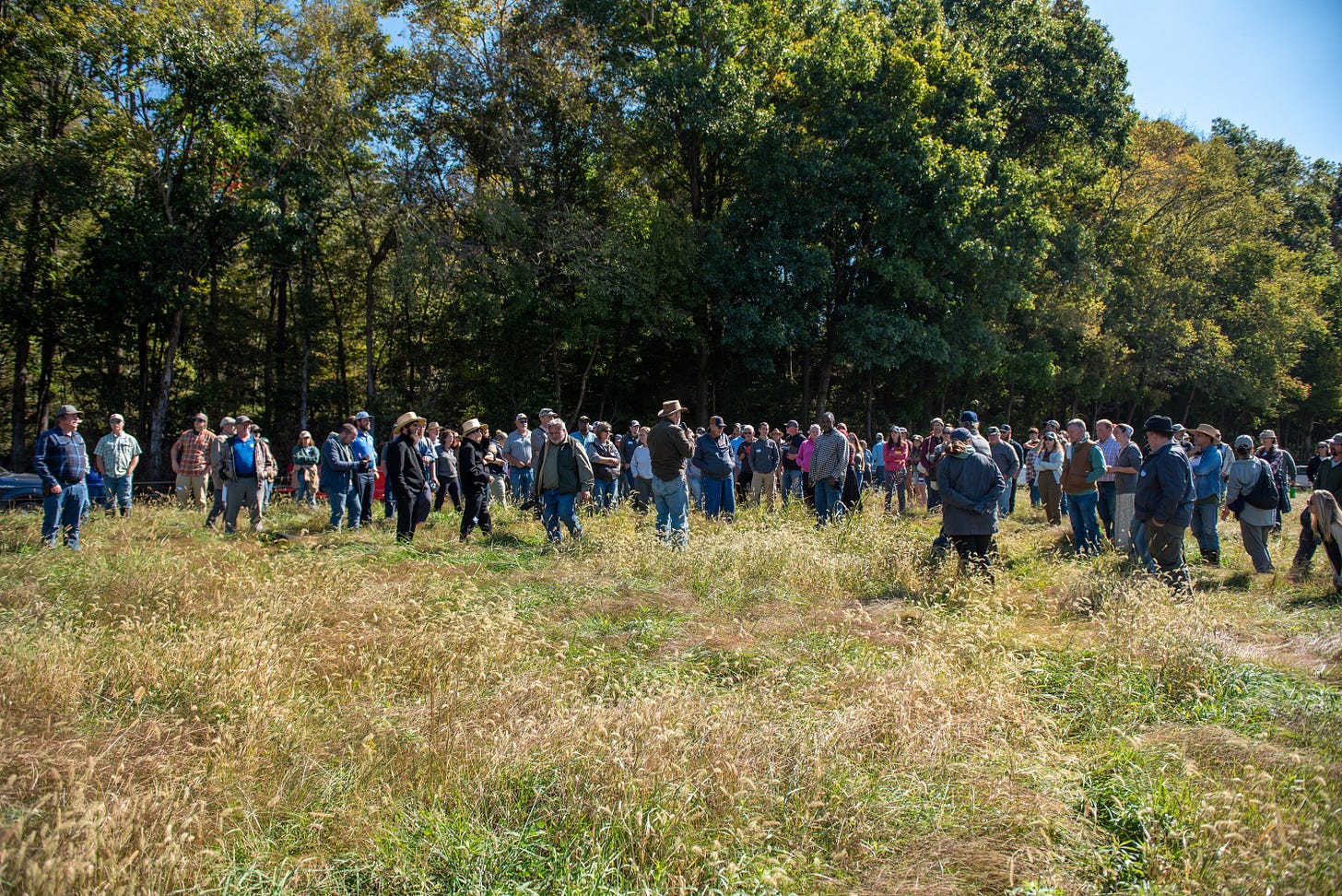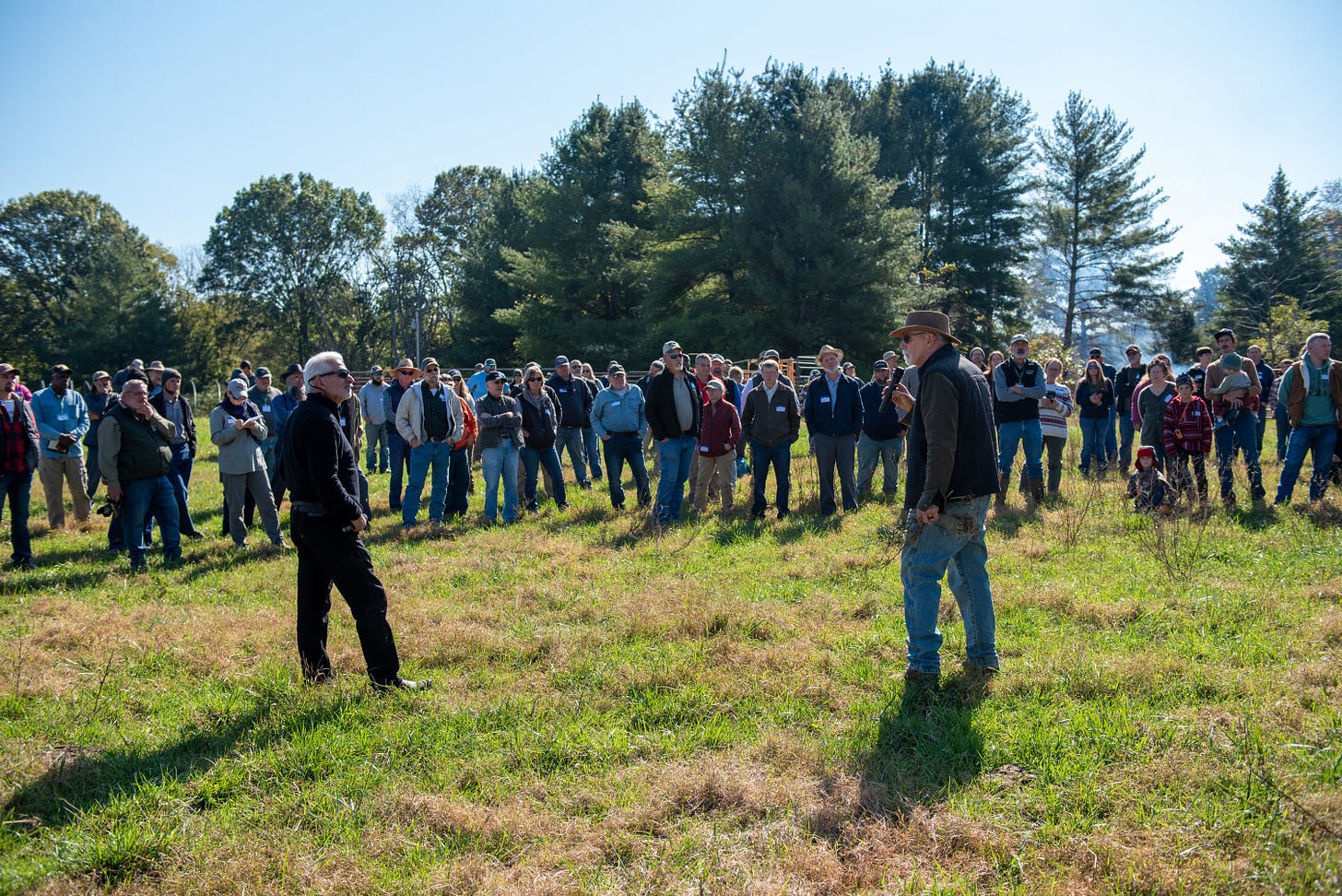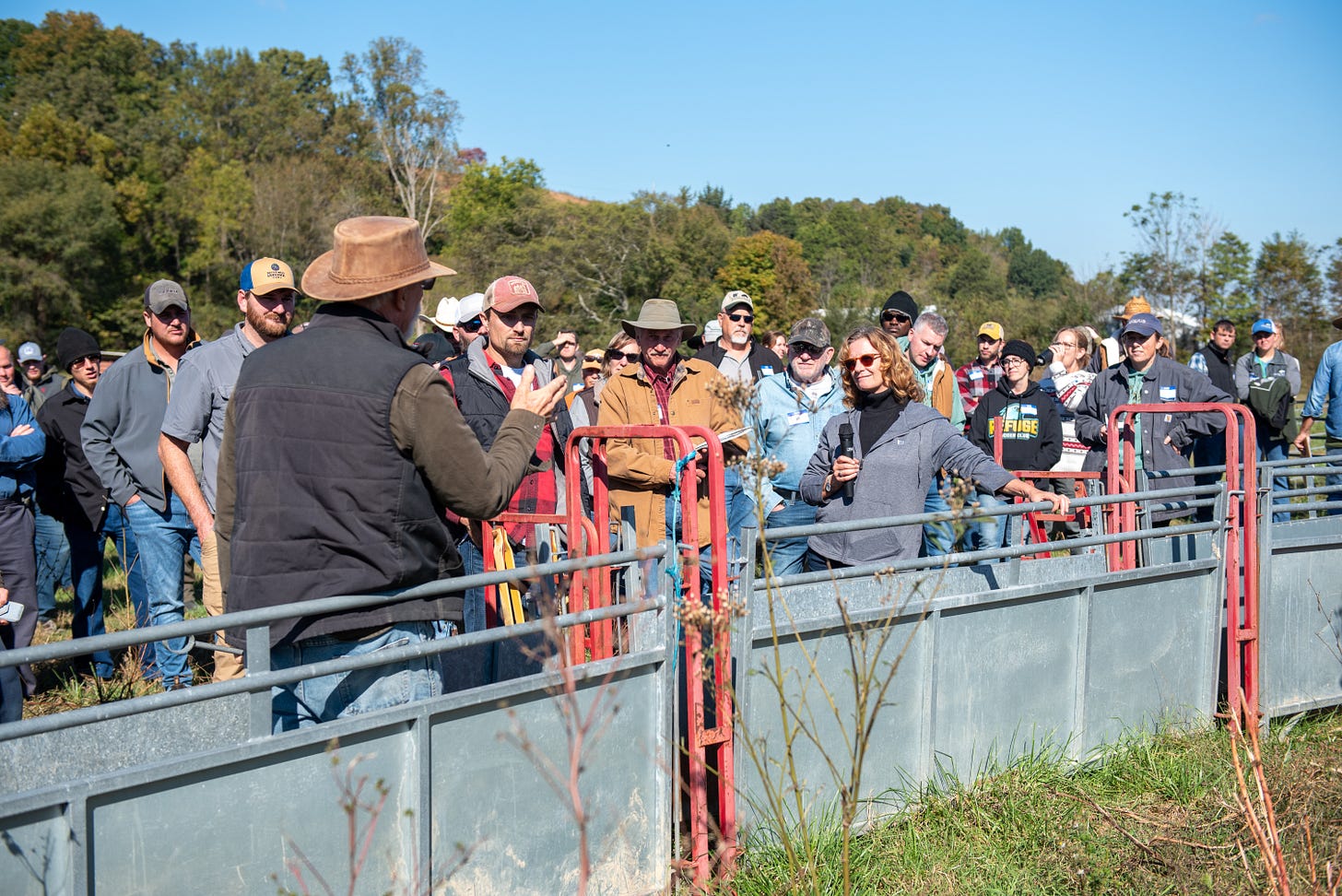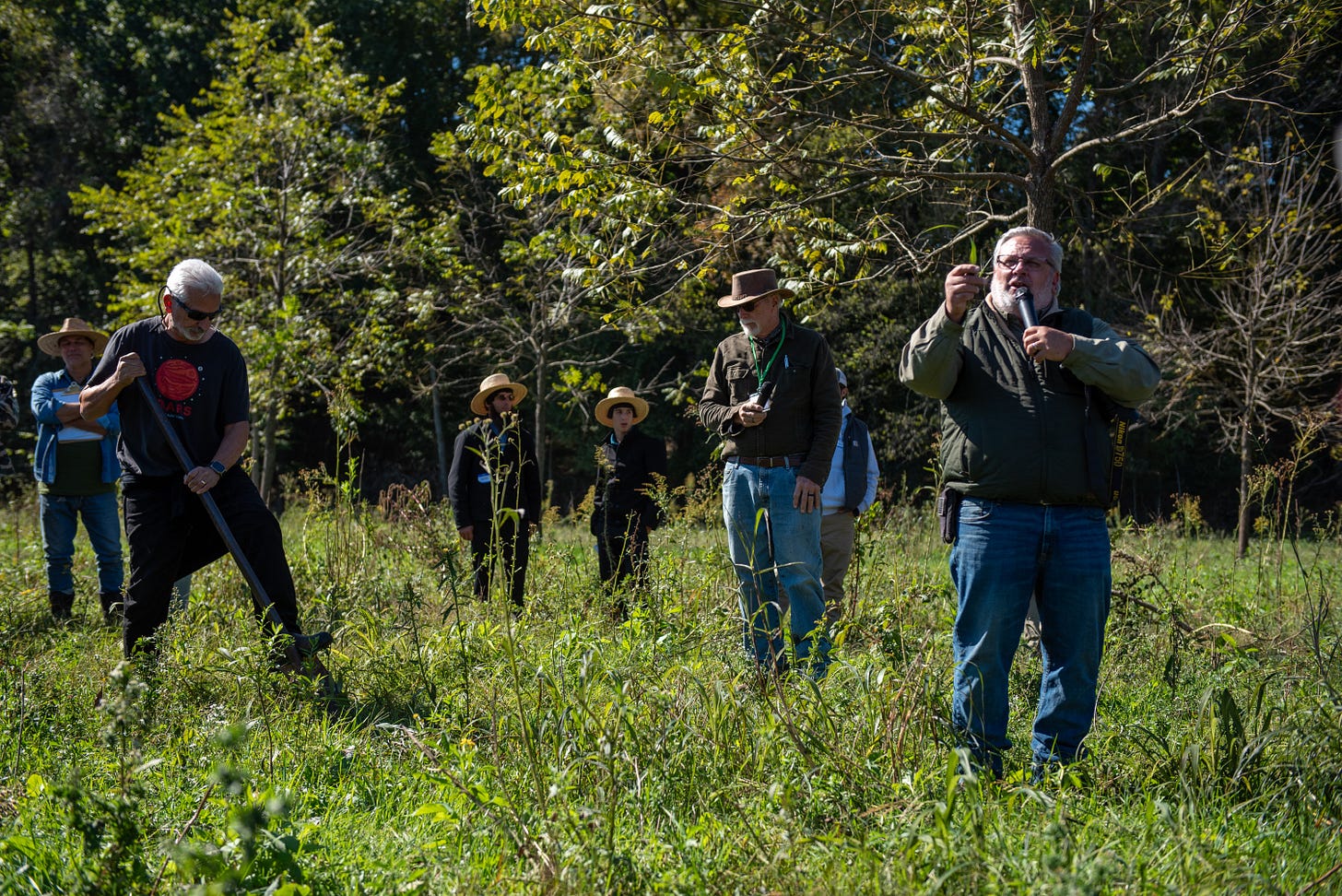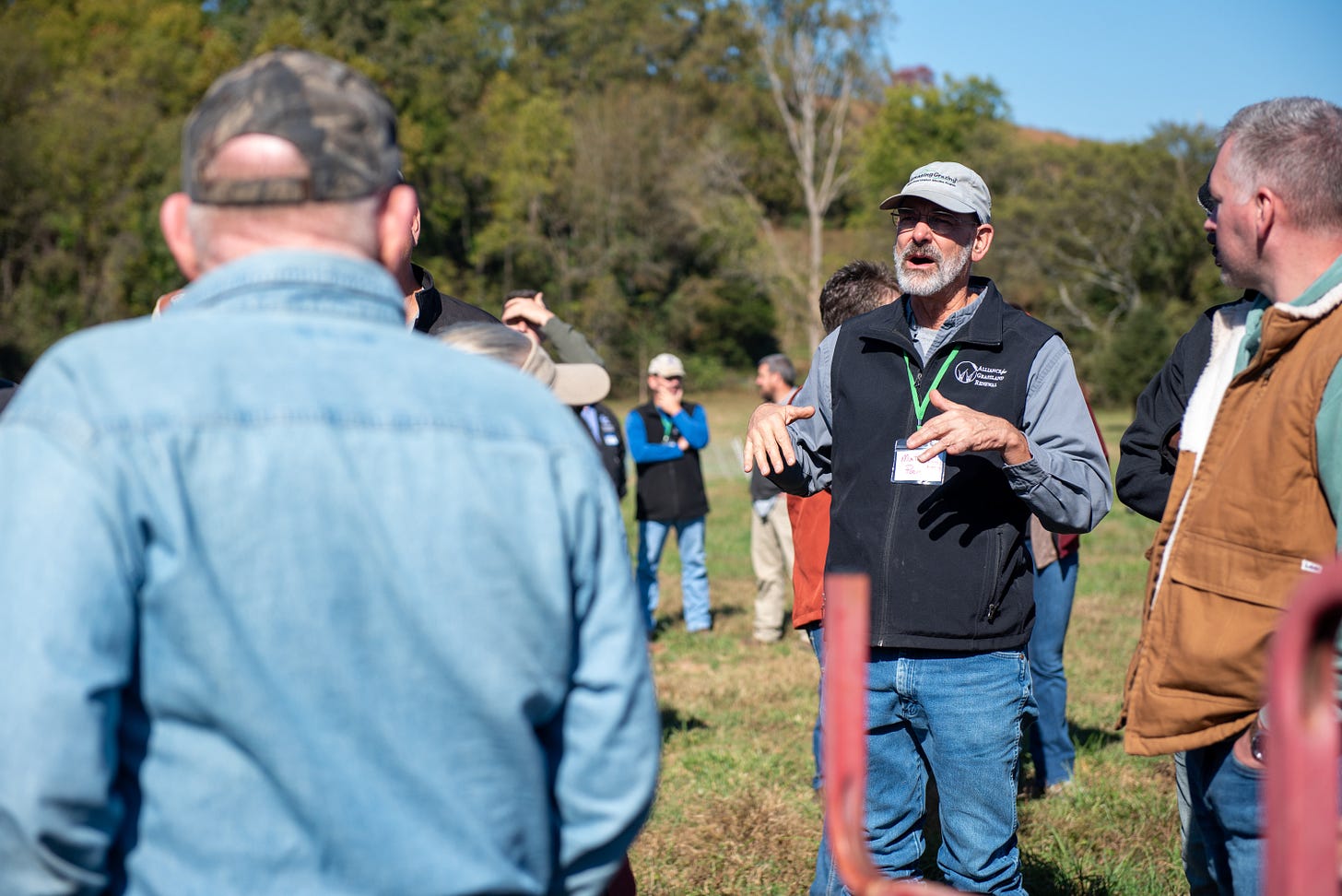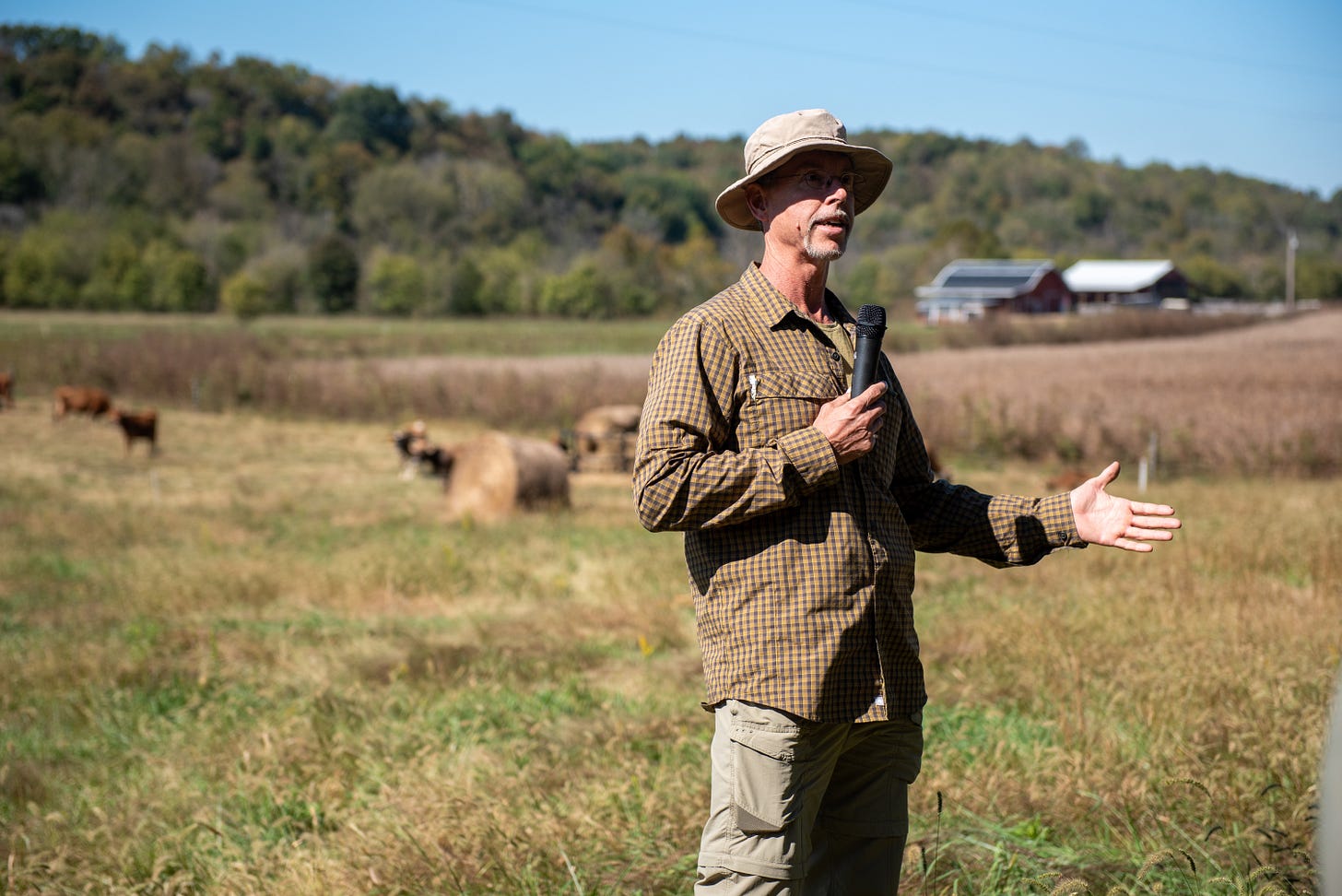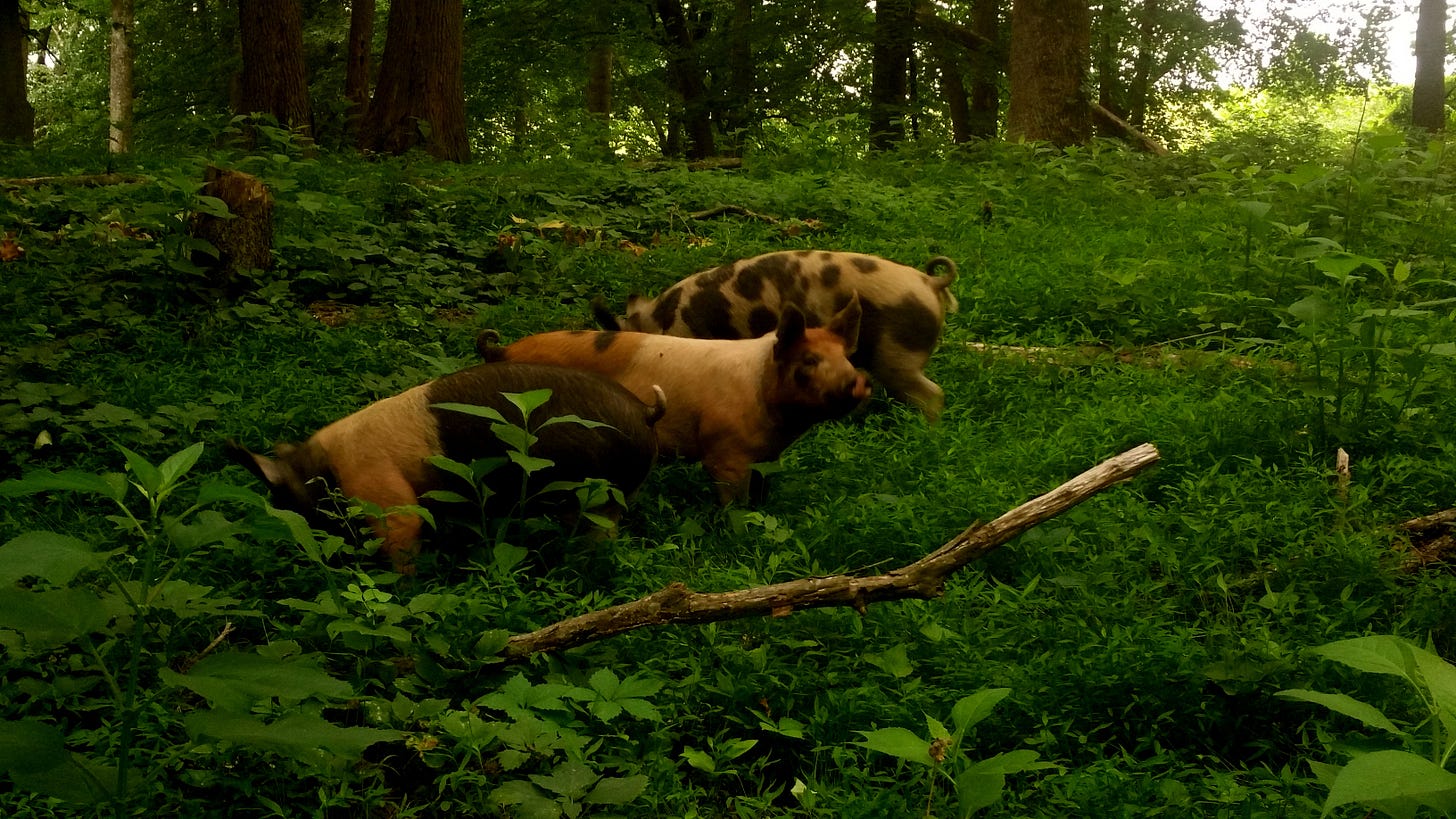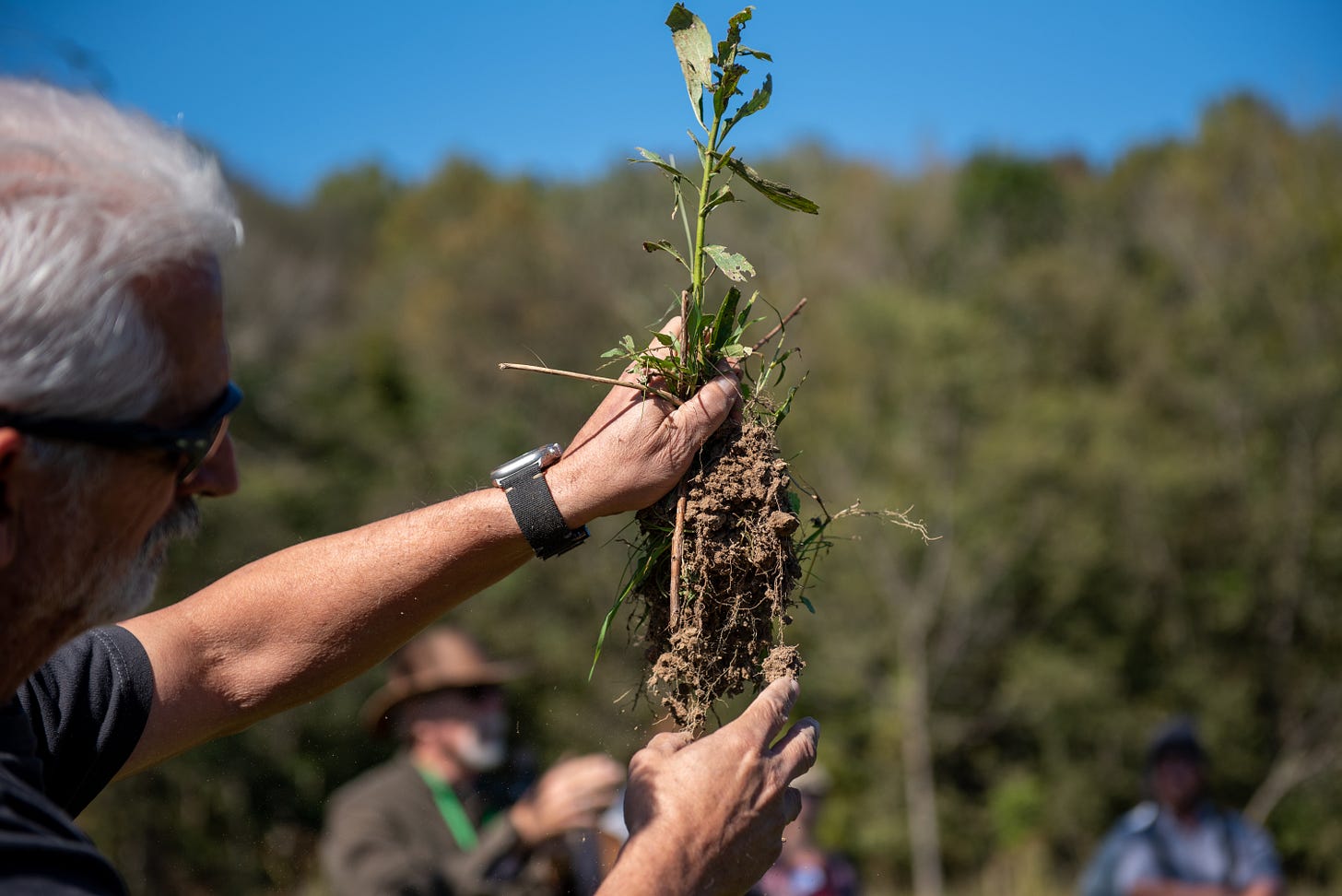TIMELY TIPS
An overview of our pasture walk
GREETINGS and OVERVIEW
Welcome to a virtual tour of my pasture walk, where we'll review the tour for those unable to attend and put into writing some of the memorable highlights for those attendees without paper and pen.
Recently, we've received some rain, with more forecasted. When temperatures reach 60 degrees or higher, we can expect to see positive growth, especially if we have green leaves—our natural solar panels—ready to capture the sunlight.
Many thanks to Michael Sellas for capturing these moments with his photography.
OVERVIEW OF MY PASTURE WALK
We had so many knowledgeable attendees this year, and the discussions were in-depth and vigorous. This year I was assisted by Ray Archuletta (Independent Agronomist and Soils Specialist), Dr. Alan Franslubber (ARS Soils Researcher), Dr. Matt Poore (NCSU Animal Scientist and Grazing Specialist), Dr. Chris Teutsch (Forage Agronomist), Dr. Greg Halich (Agricultural Economist and Bale Grazing Specialist), along with numerous accomplished and enthusiastic grazers.
I always begin the pasture walk by sharing my goal, which was revised this year: "To create a healthy, low-stress, low-cost grazing operation that enhances production and the environment while remaining consistently profitable. It's about managing life to cultivate miracles that shape a magical landscape."
Stop 1: Pasture Renovation
It's a good time to renovate a pasture when at least 50% of the forage is undesirable. In the case of our 12-acre sheep pasture, nimblewill was the main issue in a thin orchardgrass area. Since I don't use pesticides or inorganic fertilizers, I grazed the pasture hard before seeding. With sheep being more selective grazers than cattle, we brought in 10 cows, and they devoured the nimblewill. This is an advantage in multi-species grazing.
I drilled in a mix of cool-season annuals and then removed the livestock. The field will be left to grow until the grass reaches at least eight inches tall, and I will delay grazing until after Thanksgiving. A longer delay before grazing would be ideal but it is looking good.
We had a detailed discussion on how to manage nimblewill. Glyphosate can kill almost everything in the pasture, but it only keeps nimblewill at bay for about two years, making it an inadequate solution. During the pasture ecology workshop, Lincoln Pyle from Glenmar Farm shared that he successfully controlled nimblewill by burning the area with fire and planting white clover. This approach worked well since eastern gamagrass was already established.
It's important to consider the larger ecosystem; white clover serves as an excellent ground cover, as noted in the book "One Straw Revolution." However, white clover provides such effective weed control that it can make it difficult to establish other grasses alongside it. Once the grass is firmly established, it can be a good option.
The density of nimblewill makes it tough for seedlings, and I didn't achieve a great stand of annuals in that area even though annuals typically have more robust seedlings compared to perennials. Next time, I plan to use a weed torch to burn the area before seeding.
Stop 2, Walnut Silvopasture: I planted annuals on CRP (Conservation Reserve Program) land that had been set aside for 15 years. Last fall, I bale grazed there and grazed it three times during the year. The annual mix I used this time included cereal rye, barley, oats, annual ryegrass, red clover, hairy vetch, and crimson clover. I prefer a diverse mix but adjust my seeding based on cost, aiming to spend at most $45 per acre. If a certain species in the mix is expensive, I lower its seeding rate and increase the rate of a less costly species within the same functional group (grass, legume, or forb).
Cost was a key discussion point; annuals are typically twice the cost of perennials because you need to seed a cool-season mix followed by a warm-season mix in the spring. The productivity of annuals is slightly higher than that of perennials; annuals also offer better forage quality and palatability. However, newly established perennials are quite palatable for the first three years. Many agreed that planting annuals is a good strategy when transitioning from cropland, CRP land, or renovating a field. This year, I planted about 50% of my farm in annuals due to a significant amount of land coming out of CRP.
Ray Archuletta pointed out how beneficial annuals are for soil health. He showed the soil aggregation and discussed its importance for soil functioning. Someone recommended increasing the clover content in my mix, which I plan to do in February by seeding 2 pounds per acre of red clover. Ray and several soil management advocates suggest using more grass than clover to enhance the carbon-to-nitrogen (C:N) ratio. Ray mentioned that too much legume could lead to increased bulk density, which reduces soil aggregation and limits water and air availability. Soil health tests can be conducted to determine the optimal percentage of legumes needed. Matt Poore emphasized that the best way to improve grazing lands is through high-density, short-duration grazing.
The annual seeding was carried out in the walnut silvopasture, with the walnuts being about 13 years old and 30 feet tall. Chris Teutsch discussed tree protection and managing light for forage production. My goal is to maintain around 35% shade across the field, with no more than 50% shade, as excessive shade can reduce forage production. I also plan to prune the limbs up to 21 feet to produce saw logs.
David Hughes, who runs “Rock Bridge Trees” in Bethpage, spoke about thornless honeylocust trees that can produce 200-300 pounds of pods for livestock feed. By planting seven trees per acre, I could provide an additional ton of feed annually. Matt Poore noted that if a thorned variety pollinates a thornless honeylocust, the offspring are likely to have thorns as well. However, David clarified that sheep eat the pods, so germination shouldn't be a concern. I purchased two thornless honeylocust trees to experiment with: Hershey and Calhoun.
On the way, we passed by some bulls I have for sale: a nice slick calving ease, five-year-old Hereford with high libido, a yearling Charolais, and a yearling Hereford, and we also admired some healthy stockpiled grass.
Stop 3: Bale grazing is being implemented at the dairy farm in order to grow grass while the conditions are right for growing. We laid out about ten days' worth of hay and are rationing a bit of grass along with it, which provides a more consistent diet for the cattle. I prefer using plastic hay rings because they are easier to move, and the cattle can nudge them to clean up the last bits of hay. While this approach may lead to a bit more hay being wasted, it also serves as a light mulch that helps reduce mud buildup.
Stop 4. We examined the cattle, and I emphasized that our focus is on sleek, deep-bodied, wide cattle with a flat top, level udders, and a good gait. There is more variation within breeds than between them, and our herd is a blend of different breeds.
To control flies, we use garlic and have recently switched to Redman minerals with garlic to reduce the work of mixing it ourselves.
We offer Redman beef mineral with garlic and Redman SR65 with garlic to all our livestock. While we aren't actively promoting it, we are open to selling minerals to anyone interested.
Stop 5: Pigs in the woods, with some openings available for forage production. The pigs were a bit shy this year, but they consist of a mix of Duroc, Hampshire, Yorkshire, and Berkshire breeds. I have a few Old Spot pigs that we've decided to steer clear of in the future because their ears hang down, which prevents them from seeing well. After the pigs have foraged, we plant annuals in disturbed areas. Although they have access to nuts, grass, and legumes, the pigs are on a full-feed diet. We have several catch pens where we feed for a few days before butchering to make the load out a bit easier. They are typically contained with one or two hot wires.
Stop 6: Cattle corral: we toured our cattle corral, showing the alley encircling the three sort pens and the Canadian sorting alleys where young calves are easily separated from cows prior to working them. I also pointed out the tree plantings around the corral and up the fencelines. Trees are planted 2.5' off fencelines with a second fence to protect young trees.
Thank you to everyone who attended this year. The discussions were robust and helped to show that there's more than one way to manage soil health! Thanks also to everyone who gave us feedback on the event. It helps us to make every year better than the last. I appreciate everyone's interest in regenerative ag and the rewards it can bring.
Greg Brann, Synergistic Grazing Consultant
https://gregbrann.com/
UPCOMING EVENTS
January 23-25, 2025, Organic Association of Kentucky (OAK) Annual Conference, Frankfort, KY. I’ll be presenting with Brett Chedzoy on the 23 “Silvopasture in the Eastern Hardwood Forests.”
January 24, and 25 Tennessee Cattlemen's Association Annual Meeting, Murfreesboro, TN. I’ll be presenting on multi-species grazing https://www.tncattle.org/2025-tca-convention-trade-show
February 20, Grazing for Profit, Maryville, TN, Dr. Chris Teutsch and I will facilitate round table discussions about everything grazing. More information as it develops
February 21 and 22, Greg Judy and I will be presenting at the Manderley Farm Grazing Conference. Pikeville, TN. More information later
